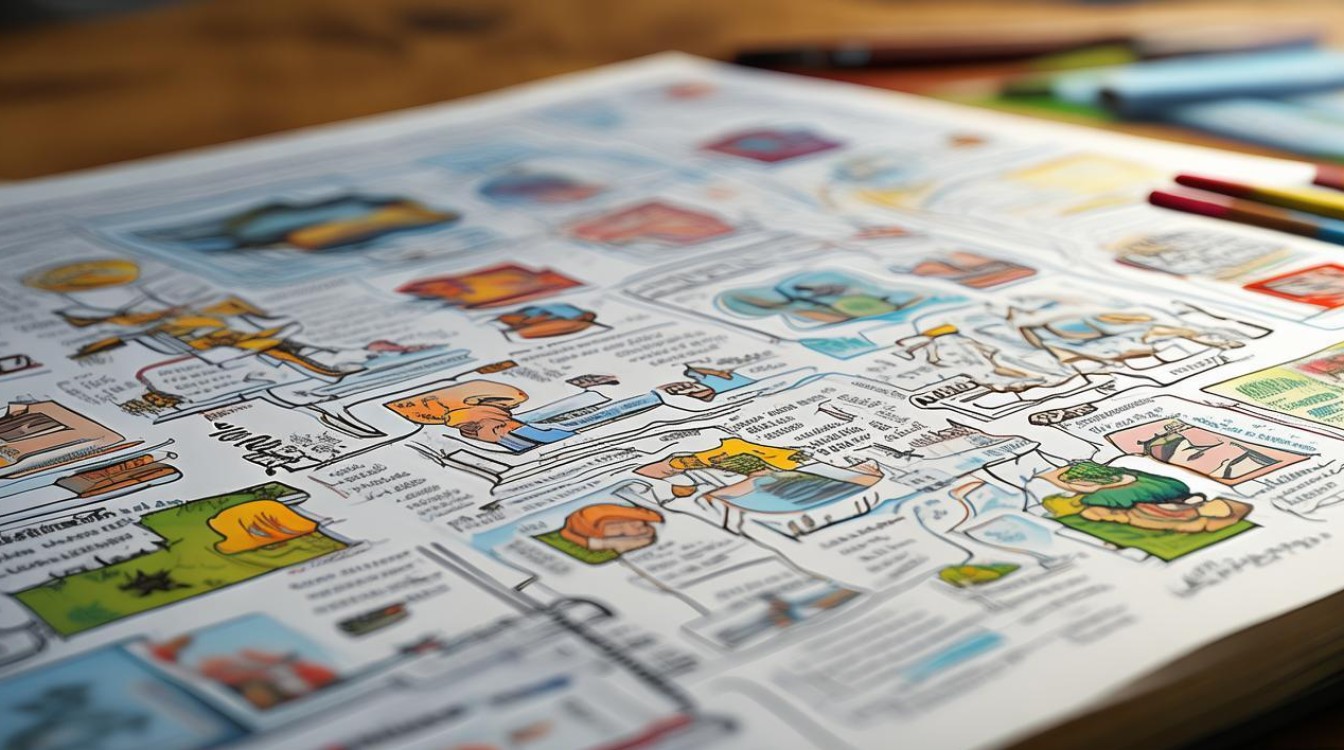这份导图按照教材的单元划分,涵盖了核心话题、重点词汇、核心句型、语法重点以及写作技巧,非常适合用于复习、预习和构建完整的知识体系。

人教版八年级下册英语(Go for it!)全册思维导图总览
八年级下册英语共包含10个单元,可以分为三大主题板块:
- 人与社会: 探讨社会热点、人际关系、历史与未来。
- 人与自我: 关注个人健康、情绪管理、解决问题和职业规划。
- 人与自然: 了解环境保护、自然奇观和科学探索。
Unit 1 What's the matter?
- 核心话题: 健康问题与建议
- 重点词汇:
- 身体部位:
head, eye, ear, nose, tooth, throat, stomach, back, neck, foot, arm, hand - 疾病:
fever, have a cold, have a cough, have a stomachache, have a toothache, have a sore throat, have a fever, hurt oneself - 动词短语:
lie down, rest, drink hot tea with honey, see a dentist, go to a doctor
- 身体部位:
- 核心句型:
- 询问病情:
What's the matter (with you)? / What's the trouble (with you)? / What's wrong (with you)? - 回答病情:
I have a ... / I have a sore throat. / My head hurts. - 提出建议:
You should/shouldn't ... / You could ... / Why don't you ...? / It's a good idea to ...
- 询问病情:
- 语法重点:
- 情态动词
should的用法:- 表示建议、劝告:
You should lie down and rest. - 否定式:
You shouldn't eat so much candy.
- 表示建议、劝告:
What's the matter with ...?句型
- 情态动词
- 写作技巧:
- 学会写一封关于健康问题的邮件或信件。
- 结构: 开头问候 -> 描述自己的问题 -> 询问对方的建议 -> 结尾祝福。
- 示例:
Dear [Friend's Name], I'm sorry to hear that you are not well. I have a problem too...
Unit 2 I'll help to clean up the city parks.
- 核心话题: 志愿活动与帮助他人
- 重点词汇:
- 动词短语:
clean up, cheer up, give out, come up with, put off, write down, call up, hand out, fix up - 名词:
volunteer, sign, notice, feeling, joy, satisfaction
- 动词短语:
- 核心句型:
- 提出帮助:
I'd like to... / I want to... / I hope to... - 描述志愿活动:
We're going to help... / We plan to... make a difference:We can make a difference.
- 提出帮助:
- 语法重点:
- 动词不定式作宾语、宾语补足语、目的状语:
- 作宾语:
I want to join the volunteer project.(want to do) - 作宾补:
The teacher asked us to clean the classroom.(ask sb. to do) - 作目的状语:
He studies hard to get good grades.(in order to do)
- 作宾语:
- 动词不定式作宾语、宾语补足语、目的状语:
- 写作技巧:
- 学会写一篇关于志愿活动经历或计划的短文。
- 结构: 介绍活动 -> 描述具体做了什么 -> 谈谈感受和收获。
Unit 3 Could you please clean your room?
- 核心话题: 家庭责任与礼貌请求
- 重点词汇:
- 家务劳动:
do the dishes, sweep the floor, take out the trash, make the bed, fold the clothes, clean the living room - 短语:
have a test, get a ride, borrow sth. from sb., invite sb. to do sth.
- 家务劳动:
- 核心句型:
- 礼貌请求:
Could you please ...? / Would you mind ...? - 礼貌地请求许可:
Could I ...? / May I ...? / Can I ...? - 同意或拒绝:
- 同意:
Sure, no problem. / Of course. / Certainly. - 拒绝:
Sorry, I can't. I have to... / I'm afraid not.
- 同意:
- 礼貌请求:
- 语法重点:
- 情态动词
could和can表请求与许可:Could you please...?比Can you...?更委婉。Could I go out to play?(请求许可)
make和do的区别:make: 制造,创造 ->make a cake, make a plando: 做,执行 ->do the dishes, do homework
- 情态动词
- 写作技巧:
- 学会写一篇关于家庭规则或分担家务的邮件。
- 结构: 说明写信目的 -> 列出具体规则/家务 -> 解释原因。
Unit 4 Why don't you talk to your parents?
- 核心话题: 人际关系与情绪问题
- 重点词汇:
- 情绪:
angry, nervous, sad, annoyed, stressed out, lonely - 短语:
argue with sb., instead of, get on well with sb., communicate with sb., ask for advice, write down, work out
- 情绪:
- 核心句型:
- 提出建议:
Why don't you ...? / You should ... / You could ... - 描述问题:
I have a problem. / I argued with my best friend.
- 提出建议:
- 语法重点:
Why don't you do ...?句型: 提出建议。until的用法:Wait until your father comes back.(直到...才...)- 比较级和最高级:
I feel even worse.(甚至更糟)
- 写作技巧:
- 学会写一封向朋友或专家咨询建议的信件。
- 结构: 描述自己遇到的问题 -> 询问对方意见 -> 感谢对方。
Unit 5 What were you doing when the rainstorm came?
- 核心话题: 过去进行时
- 重点词汇:
- 天气:
rainstorm, sunny, cloudy, windy, rainy - 短语:
at the time of, go off, pick up, break down, wait for, in the library, in the kitchen
- 天气:
- 核心句型:
- 询问过去某个时间点正在做的事:
What were you doing when ...? - 回答:
I was doing ... when ... - 描述事件顺序:
While she was making the soup, the phone rang.
- 询问过去某个时间点正在做的事:
- 语法重点:
- 过去进行时:
- 结构:
was/were + doing - 用法: 表示过去某个特定时间点或时间段正在进行的动作。
- 常与
at 8:00 last night, this time yesterday, when...等时间状语连用。
- 结构:
when和while的区别:when: 可与延续性或短暂性动词连用,从句和主句动作可同时发生。while: 只能与延续性动词连用,表示“在...期间”。
- 过去进行时:
- 写作技巧:
- 学会写一篇记叙过去经历的短文。
- 运用
when和while来连接事件,使文章逻辑清晰。
Unit 6 An old man tried to move the mountains.
- 核心话题: 中国古代故事与寓言
- 重点词汇:
- 故事类:
once upon a time, magic, shoot, stone, weak, remind, bit, a little bit, continue - 神话人物:
Journey to the West (西游记), Monkey King (孙悟空), Yu Gong (愚公)
- 故事类:
- 核心句型:
- 引述故事:
Once upon a time, there was... / A long time ago... - 描述故事情节:
The old man tried to... / So he said...
- 引述故事:
- 语法重点:
- 连词
so和because:so: 表结果,He was tired, so he went to bed early.because: 表原因,He went to bed early because he was tired.
unless的用法:Unless you work hard, you won't succeed.(除非...否则...)
- 连词
- 写作技巧:
- 学会复述或改写一个简单的寓言故事。
- 结构: 开头介绍故事 -> 发展情节 -> 结尾点明寓意。
Unit 7 What's the highest mountain in the world?
- 核心话题: 世界地理与自然奇观
- 重点词汇:
- 地理名词:
Qomolangma (珠穆朗玛峰), the Sahara (撒哈拉沙漠), the Nile (尼罗河) - 形容词:
high, deep, long, big, famous, popular - 短语:
as far as I know, in the world, take in, feel free to, achieve one's dream
- 地理名词:
- 核心句型:
- 询问最高/最长/最深:
What's the highest mountain in the world? / What's the longest river in Asia? - 回答:
Qomolangma is... / The Nile is...
- 询问最高/最长/最深:
- 语法重点:
- 形容词和副词的最高级:
- 构成: 单音节词加
-est(tall -> tallest); 多音节词前加most(beautiful -> most beautiful); 不规则变化 (good -> best, bad -> worst, far -> farthest/furthest)。 - 句型:
A is the + 最高级 + 比较范围 in/of...
- 构成: 单音节词加
- *
one of the + 最高级 + 复数名词:Qomolangma is one of the most famous mountains in the world.
- 形容词和副词的最高级:
- 写作技巧:
- 学会写一篇介绍某个地方或事物的说明文。
- 结构: 介绍基本信息 -> 描述其特点(运用比较级和最高级)-> 总结其重要性。
Unit 8 Have you read Treasure Island yet?
- 核心话题: 经典文学与个人体验
- 重点词汇:
- 文学类:
novel, page, title, already, just, yet, ever, never - 短语:
on page 25, finish doing sth., so far, grow up, be famous for
- 文学类:
- 核心句型:
- 现在完成时的疑问句和否定句:
Have you read... yet? / Has he seen... yet? - 回答:
Yes, I have. / No, I haven't. / Not yet.
- 现在完成时的疑问句和否定句:
- 语法重点:
- 现在完成时:
- 结构:
have/has + 过去分词 - 用法:
- 表示过去发生并持续到现在的动作或状态 (常与
for,since连用)。 - 表示过去发生,对现在有影响的动作。
- 表示过去发生并持续到现在的动作或状态 (常与
- 与
already,just,yet,ever,never的连用。
- 结构:
- 现在完成时:
- 写作技巧:
- 学会写一篇关于自己阅读经历或喜好的短文。
- 结构: 介绍读过的书 -> 描述书的内容或感受 -> 谈谈自己的收获。
Unit 9 Have you ever been to a museum?
- 核心话题: 旅游经历与场所介绍
- 重点词汇:
- 场所:
museum, amusement park, aquarium, zoo, space museum, water park, art museum - 短语:
take a vacation, go on vacation, camp, hear of, end up, in the past
- 场所:
- 核心句型:
- 询问去过某地:
Have you ever been to...? - 回答:
Yes, I have. / No, I haven't. - 谈论感受:
It was fantastic. / I love it.
- 询问去过某地:
- 语法重点:
- 现在完成时 (
have/has been to与have/has gone to的区别):have/has been to: “去过某地(已回来)”,强调经历。have/has gone to: “去了某地(不在说话地)”,强调目的地。
How/What about...?提出建议
- 现在完成时 (
- 写作技巧:
- 学会写一篇介绍某个旅游胜地的短文或推荐信。
- 结构: 介绍地点 -> 描述可以做的活动和看到的景色 -> 推荐理由。
Unit 10 I'm watching TV.
- 核心话题: 现在进行时
- 重点词汇:
- 动词:
watch TV, read a newspaper, talk on the phone, listen to a CD, wash the dishes, make soup, exercise - 短语:
at the mall, pool, supermarket, library
- 动词:
- 核心句型:
- 询问此刻正在做什么:
What are you doing? - 回答:
I'm watching TV. / He's reading. - 描述同时发生的动作:
While he was eating, I called him.
- 询问此刻正在做什么:
- 语法重点:
- 现在进行时:
- 结构:
am/is/are + doing - 用法: 表示说话时或现阶段正在进行的动作。
- 结构:
- 现在进行时表将来:
I'm meeting my friend this afternoon.(表示已安排好的未来计划)
- 现在进行时:
- 写作技巧:
- 学会写一篇描述家庭或朋友此刻正在做什么的短文。
- 运用
while连接两个同时进行的动作,使文章生动。
如何使用这份思维导图?
- 预习阶段: 在学习新单元前,先看一遍思维导图,了解本单元要学什么,做到心中有数。
- 学习阶段: 按照导图的脉络,逐一学习核心词汇、句型和语法,并尝试用它们造句或编对话。
- 复习阶段: 这是思维导图最重要的用途,合上书本,看着导图,尝试回忆每个单元的重点内容,对于不熟悉的部分,再回头看书或笔记。
- 考前冲刺: 把所有单元的思维导图过一遍,快速回顾全册知识体系,查漏补缺。
希望这份详细的思维导图能帮助你更好地学习八年级下册英语!祝你学习进步!











